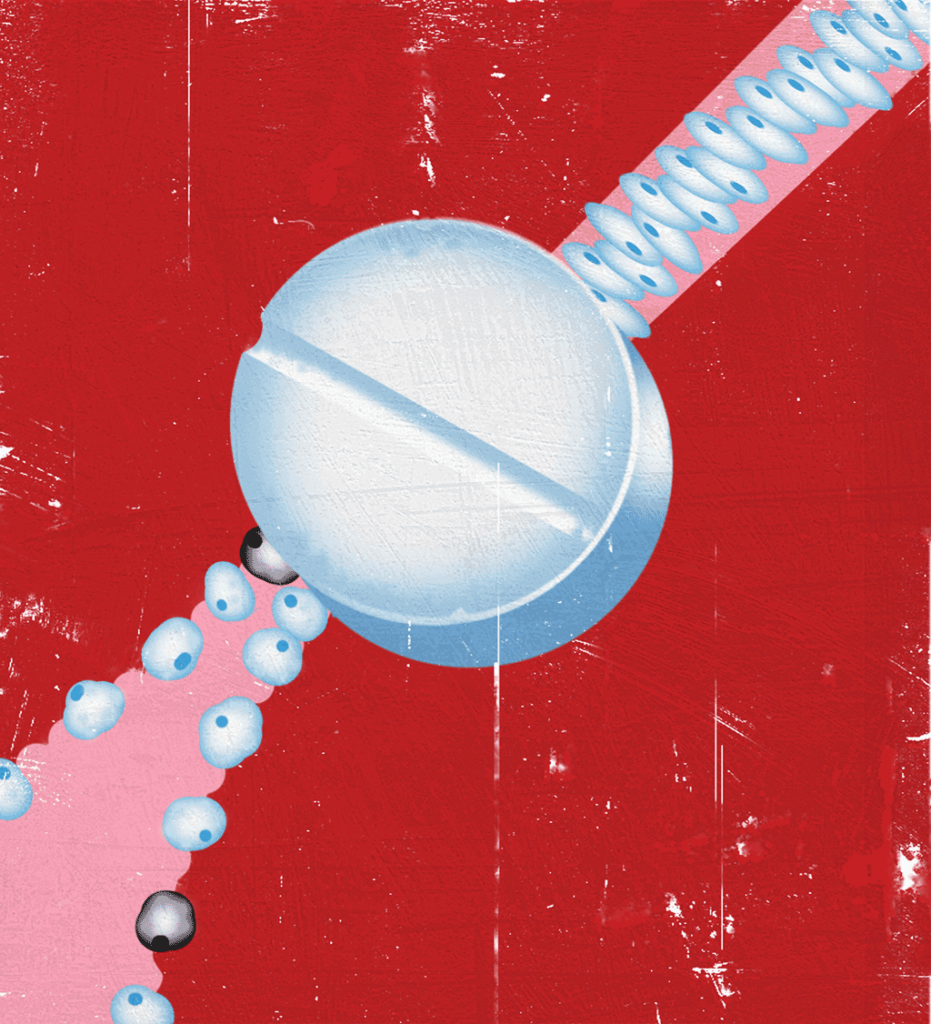Scarship enterprise
To boldly explore new ways to heal scars

Many people have scars from unfortunate past encounters with floors, doors and pavement. Most of the time these scars cause no lasting problems. But scars can be debilitating and even dangerous.
“The biomedical burden of scarring is enormous,” says Michael Longaker, MD, co-director of Stanford’s Institute for Stem Cell Biology and Regenerative Medicine. “About 80 million incisions a year in this country heal with a scar, and that’s just on the skin alone. Internal scarring is responsible for many medical conditions, including liver cirrhosis, pulmonary fibrosis, intestinal adhesions and even the damage left behind after a heart attack.”
Scars are comprised mainly of collagen, a fibrous protein secreted by a type of cell found in the skin called a fibroblast. Collagen is one of the main components of the extracellular matrix — a three-dimensional web that supports and stabilizes the cells in the skin.
Now Longaker and stem cell expert Irving Weissman, MD, and colleagues have identified the cell type in mice that is responsible for much of the development of a scar. They’ve shown that blocking this cell’s activity with a small molecule can reduce the degree of scarring. Because a similar drug molecule is already approved for use in humans to treat type-2 diabetes, the researchers are hopeful that they can begin clinical trials in humans soon. The research was published recently in Science.
Interestingly, scars represent a kind of evolutionary compromise that emerged in the relatively recent past.
“We are the only species that heals with a pathological scar, called a keloid, which can overgrow the site of the original wound,” says Longaker. “Humans are a tight-skinned species, and scarring is a late evolutionary event that probably arose in response to a need, as hunter-gatherers, to heal quickly to avoid infection or detection by predators. We’ve evolved for speedy repair.”
Longaker and his colleagues found that a subset of fibroblast cells is responsible for much of the collagen deposition that leads to scarring. Inhibiting the activity of a protein on the surface of the cells significantly reduced the amount of scarring during wound healing in laboratory mice — from about 30 percent of the original wound area down to about 5 percent. Furthermore, the researchers showed the cells are also involved in the thickening and darkening of skin exposed to radiation therapy for cancer, as well as the spread of melanoma tumors in the animals.
Complete healing of wounds in which the activity of this protein was blocked required an additional six days compared with mice in which the protein remained active, but much of the repaired skin looked and appeared to function normally. In contrast, scarred skin is frequently less flexible and weaker than uninjured skin.
Longaker has been interested in how the skin heals for decades — ever since as a student he learned that human fetuses undergoing repair surgery in the womb heal without any scarring if the surgery takes place before the third trimester. Now he’s excited to learn whether there’s a way to recapture that long-lost ability as adults and at least reduce the degree of scarring during skin repair.
“I’ve been obsessed with scarring for 25 years,” Longaker says. “Now we’re bringing together the fields of wound healing and tumor development in remarkable new ways. It’s incredibly exciting.”

